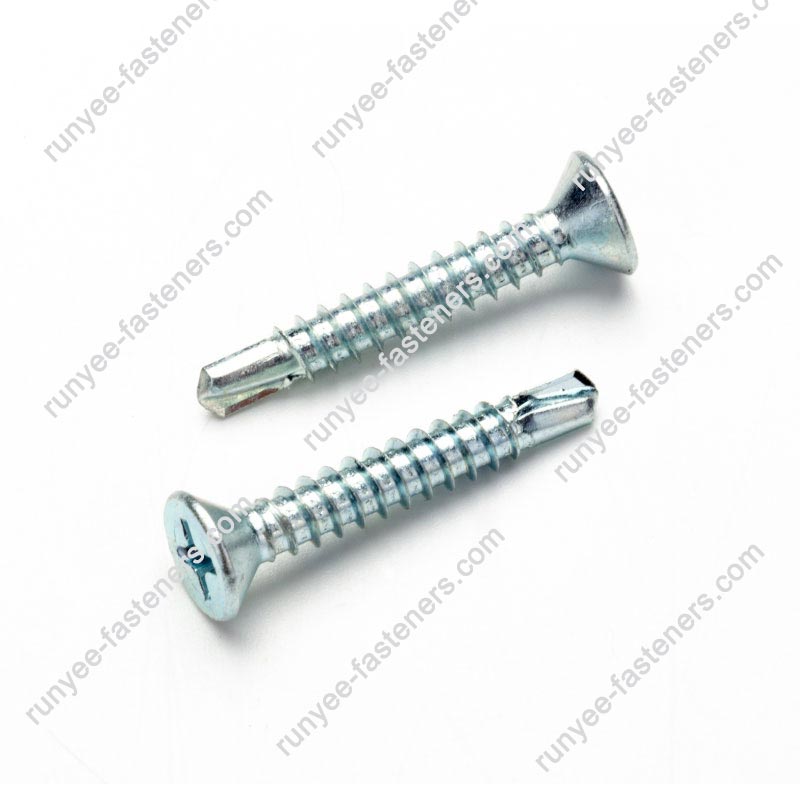Self-Drilling Screws: The Ultimate Fastening Solution for Metal and Wood
2025-03-18
When it comes to fastening materials efficiently, self-drilling screws are a game-changer. These specialized screws eliminate the need for pre-drilling, making them a time-saving and cost-effective solution for various construction, manufacturing, and DIY projects. In this blog, we will explore what self-drilling screws are, their advantages, types, and best applications.
What is a Self-Drilling Screw?
A self-drilling screw is a type of fastener that features a drill-like tip, allowing it to penetrate materials without the need for a separate pilot hole. This makes it different from self-tapping screws, which still require a pre-drilled hole. The built-in drill point and cutting edges allow for seamless installation in metal, wood, and composite materials.
Advantages of Self-Drilling Screws
1. No Pre-Drilling Required
The biggest benefit of self-drilling screws is their ability to cut through materials without the need for a separate drilling step. This speeds up installation and reduces labor costs.
2. Strong and Secure Fastening
With their precise drilling tip and strong threading, self-drilling screws provide a tight and durable hold, making them reliable for structural applications.
3. Time and Cost Efficiency
By eliminating the need for additional tools and pre-drilled holes, self-drilling screws save both time and money, especially in large-scale construction projects.
4. Versatility
Self-drilling screws are suitable for a wide range of materials, including metal, wood, plastic, and drywall, making them ideal for industrial, commercial, and residential applications.
5. Clean and Precise Installation
Because these screws create their own holes, they reduce material damage and ensure a neater finish, which is important for professional and aesthetic applications.
Types of Self-Drilling Screws
1. Hex Head Self-Drilling Screws
- Ideal for heavy-duty applications.
- Commonly used in metal-to-metal fastening, roofing, and steel structures.
2. Pan Head Self-Drilling Screws
- Provides a low-profile finish.
- Best for securing materials where a smooth surface is needed, such as electronics and appliances.
3. Flat Head Self-Drilling Screws
- Designed to sit flush with the surface.
- Often used in woodworking and furniture assembly.
4. Winged Self-Drilling Screws
- Includes small wings that help enlarge the hole in soft materials like wood.
- Prevents thread engagement before reaching metal.
5. Stainless Steel Self-Drilling Screws
- Corrosion-resistant and durable.
- Ideal for outdoor and marine applications.
Best Applications for Self-Drilling Screws
1. Metal Fabrication – Used for securing steel sheets, aluminum, and other metals.
2. Roofing and Cladding – Provides secure fastening in metal roofing and siding applications.
3. Woodworking and Carpentry – Suitable for assembling furniture, cabinets, and wooden frames.
4. Construction and Structural Projects – Commonly used for steel framing and industrial builds.
5. HVAC and Electrical Installations – Ideal for mounting electrical boxes, ducts, and panels.
6. DIY and Home Improvement – Perfect for household repairs, fence installations, and general construction.
How to Choose the Right Self-Drilling Screw
When selecting a self-drilling screw, consider the following:
- Material – Ensure compatibility with the surface (metal, wood, or composite).
- Head Type – Choose hex, pan, or flat head based on your application needs.
- Coating & Corrosion Resistance – Use stainless steel or coated screws for outdoor environments.
- Size & Length – Pick the right size to ensure a secure and lasting hold.
Conclusion
Self-drilling screws are a must-have for any construction or DIY project, offering convenience, efficiency, and strong fastening capabilities. Whether you're working with metal, wood, or composites, choosing the right type of self-drilling screw can significantly improve installation speed and durability.



